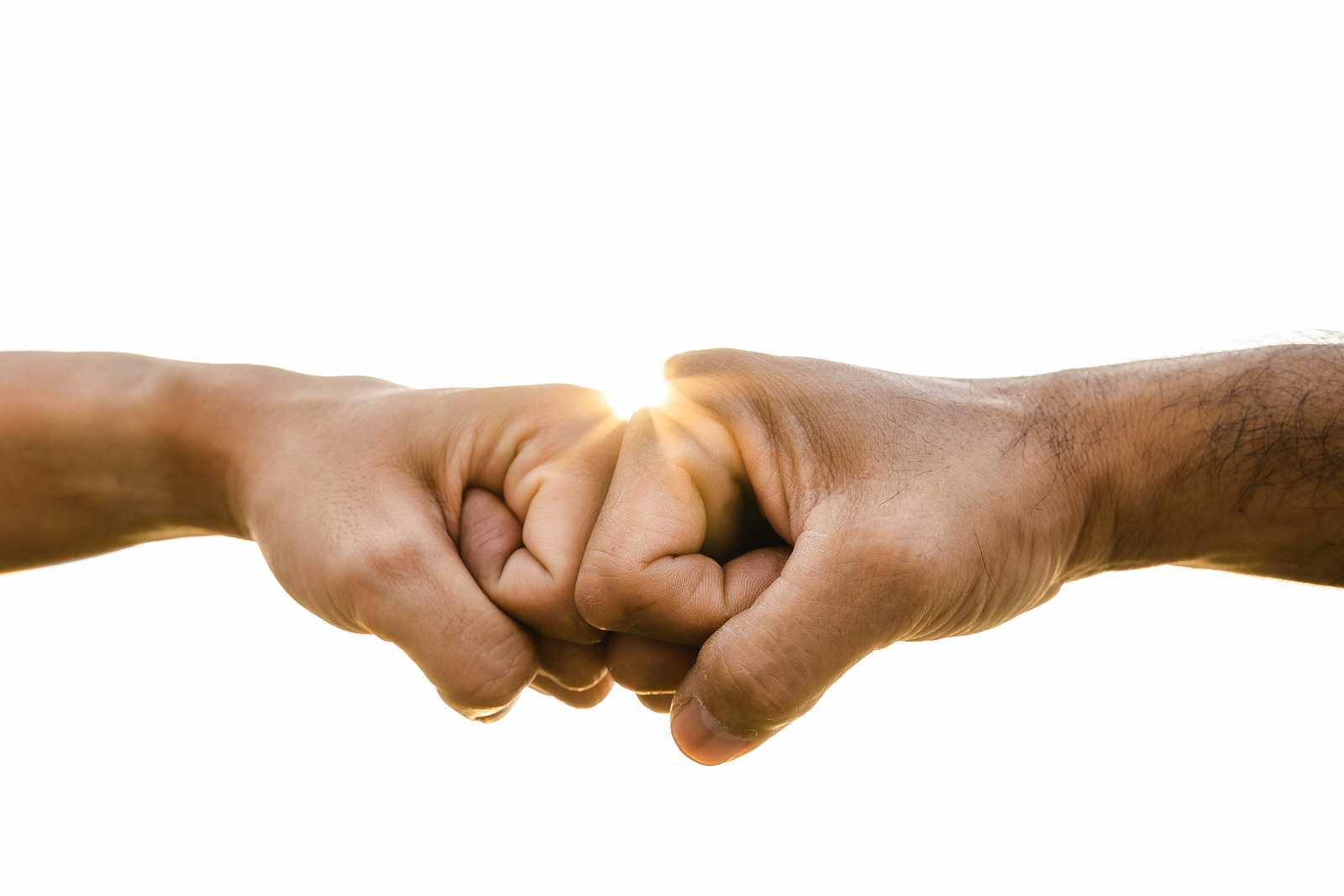
In the age of COVID, handshakes are being discouraged. Some people have adopted fist bumps, or a modification called cruise taps in which only one knuckle is contacted. How well do these strategies work to reduce viral spread?
Handshakes and Fist Bumps During COVID-19:
Americans love handshakes. Giving up hugs and handshakes has been hard during COVID-19. Some people have tried to maintain contact with friends and family by substituting fist bumps, assuming that they would be much safer than shaking hands.
Researchers at the Northeast Ohio VA Healthcare System and the Cleveland VA Medical Center wondered if fist bumps are indeed safer. They titled their research this way:
“What’s in a Handshake? Exploring the Best Form of Greeting to Prevent Hand to Hand Spread of Viruses”
(Published online in Infection Control & Hospital Epidemiology, Nov. 2, 2020)
The authors introduce their findings this way:
“Respiratory and enteric viruses are highly contagious pathogens that can be spread by contaminated hands and surfaces. We hypothesized that alternatives to handshake greetings that reduce the time and surface area of hand contact would be associated with decreased transfer of viral particles.”
How Do You Test Handshakes and Fist Bumps?
It would be unethical to actually put SARS-CoV-2 on someone’s hands to see whether they could transmit the virus to another person. No Institutional Review Board (IRB) would ever approve such a study.
What the VA researchers did was employ a safe stand-in for the coronavirus. The investigators contaminated a keyboard with a benign virus called bacteriophage MS2. Volunteers who used the keyboard were then instructed to shake hands with test subjects.
They also used a fist bump greeting and a cruise tap. The test hands were then cultured for MS2.
They found that:
“The handshake greeting resulted in significantly greater transfer of MS2 than the fist bump, but the frequency of transfer of virus was high for both greetings (91% transfer by handshake vs 59% by fist bump). The cruise-tap greeting did not result in reduced transfer of viral particles in comparison to the fist bump, and the frequency of transfer remained high (70%).”
Conclusions About Fist Bumps:
The authors concluded:
“The fist-bump and cruise-tap greetings could potentially reduce transmission of viruses in comparison to the handshake, but transfer occurred frequently, even with these greeting methods. To eliminate hand-to-hand transmission of respiratory and enteric viruses, alternative greeting methods that do not involve physical contact are needed.”
What Should We Do About Greeting People?
For the foreseeable future it looks like handshakes, fist bumps and cruise taps are out. There’s just too much risk. As far as we can tell, elbow bumps have not been tested, but on the surface they seem somewhat safer.
Perhaps it is time to adopt the Japanese style of bowing. I know that goes against the grain of many Americans, especially since we split from England in part to avoid bowing to royalty. But a nod of the head might substitute for a handshake or a bow.
Placing your right hand over your heart is another form of greeting that signifies your connection to another person. Then there is the greeting from places like India, Nepal, Cambodia and Thailand. Placing your palms together and nodding your head is a sign of respect.
Finally, there is the shaka from Hawaii. With your thumb and pinkie extended and your other three fingers touching your palm you extend the back of your hand facing your friend in greeting. This is a gesture meaning “Aloha spirit.” You can learn all about a variety of shakas at this link:
How do you like to greet friends and family during the pandemic? Share your thoughts in the comment section below.
If you appreciated this article please share with friends and family via email, Facebook or Twitter at the top of the page.
Citations
- Jones L et al, "What’s in a handshake? Exploring the best form of greeting to prevent hand to hand spread of viruses." Infection Control & Hospital Epidemiology, Nov. 2, 2020. DOI: https://doi.org/10.1017/ice.2020.1096

